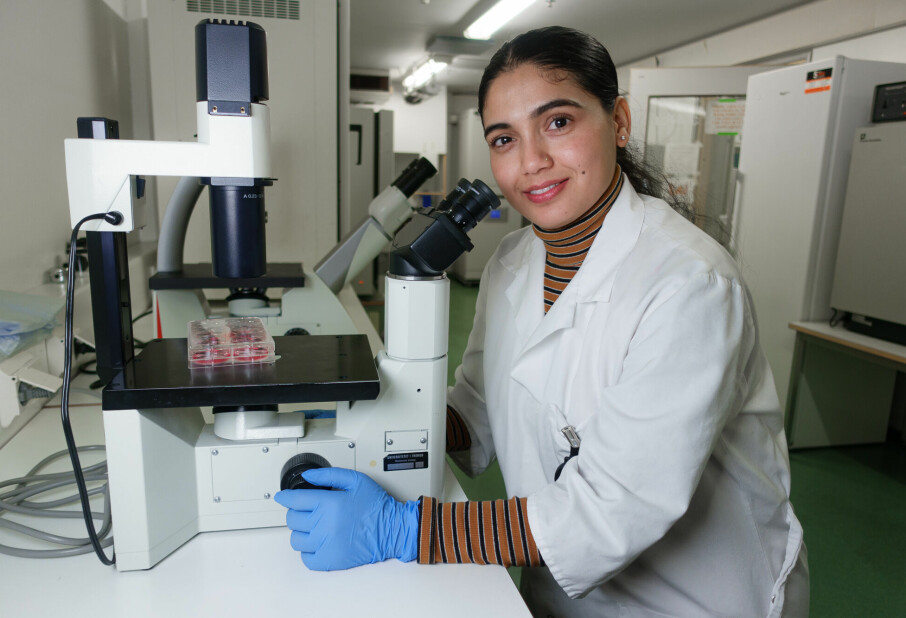This article was produced and financed by The Norwegian School of Sport Sciences - read more

Body weight at the time of birth may affect your health for the rest of your life
Your mother's weight and your own birth weight can be decisive for your health later in life. There is particular risk of cardiovascular diseases if you have a low birth weight, but physical activity can help reducing the risk.
One problem for children who weigh little at birth is that they will be less active while growing up. At least that is the case with boys.
This is one finding from a study carried out by Guro Pauck Bernhardsen at the Norwegian School of Sport Sciences (NIH).

Her study also shows that an abnormally high birth weight, rapid weight gain (particularly during the first year) or where the mother is overweight during pregnancy, are all factors that result in an increased risk of being overweight later in life.
Again, boys are more at risk in this context.
However: Physical activity can help. Boys in particular are able to reduce much of this increased risk by keeping fit.
This is slightly complex, but the findings are important as they show how many people can actually improve their health in the long term – even those who have been dealt a bad hand from birth.
Weight is important
Let’s start with what we know: We already know that so-called early factors affect your health later in life.
We know that an overweight mother (more correctly defined by body mass index or BMI) during pregnancy, birth weight and weight increases during the first year of life are all factors that increase the risk of lifestyle diseases later in life.
These are cardiovascular diseases, diabetes type 2 and the risk of being overweight or excess weight when older – all which tend to reduce the overall quality of life and also reduce expected life length.
Signs of the development of such diseases have been found as early as during childhood and adolescence among those exposed to these early risk factors.
Risk of a shorter life
Especially those who are born outside of what is deemed normal weight – that is: below 2.5 kg or above 4.5 kg – seem to be particularly susceptible to lifestyle diseases later.
This probably happens because the little one gets insufficient nutrition and then becomes weak from the start, while the overweight one is likely to become overweight also while growing up, with what this implies for this person’s health.
“This is due to the accumulation of so-called cardiometabolic risk factors, which are closely associated with lifestyle diseases such as cardiovascular diseases and diabetes type 2 – which in turn often imply a poorer quality of life and a shorter life expectancy", says Bernhardsen.
A low birth weight can be attributed to many factors:
- poor diet in the mother leading to lack of nutrition
- a mother who smokes
- hereditary conditions
- defects in the placenta or other factors
Many are also born prematurely.
It is common in analyses to eliminate this cause of low birth weight: aiming only to study those with low birth weight due to insufficient nutrition in the womb. This distinction is not that simple.
Vicious circle
Bernhardsen has also studied the significance of birth weight and body weight in young babies in relation to the level of activity in babies and children – in addition to the other side of the coin: how a good level of physical activity can eradicate the increased risk with which many children are born.
It has been confirmed that if a mother has a low BMI (less than 20), her baby will also most commonly have a low birth weight. And: This often results in the child being less physically active later, which in turn is not beneficial for their health.
“These children can have less muscle growth and poorer physical capacity later in life. They tend to develop less muscle mass and therefore less strength,” explains Bernhardsen.
She explains how a kind of vicious circle emerges, implying that the child – and adolescent – will be less physically active in life.
“We know that keeping fit is good for our health, so this can result in an increased risk of illness and disease.”
Boys more at risk than girls
One surprising finding is that this link is very evident among boys, but not among girls.
“We’re not sure why, but it may be because boys are more vulnerable to these early risk factors”, says Bernhardsen.
“Remedies for these boys can be to increase their level of physical activity. And if they have a low level of activity due to poor muscle growth, then exercise improving strength will obviously be important.”
Better to be born heavy?
The good news is that physical activity can help most conditions.
The study shows that even those dealt a bad health hand from birth are not sentenced to a life of bad health and the risk of diseases. At least not that bad.
“The more you keep fit, the more you can reduce these risk factors, that is the simple part. And this applies to everyone,” says Bernhardsen.
“However, this is not enough for people with a very low birth weight. They can reduce the risk of illness by keeping fit, but they will only be able to eliminate some of the risk.”
The opposite case, however, is much clearer.
“Persons with an overweight mother and high birth weight can eliminate almost all of the risk”, says Bernhardsen.
And the same applies even if a child’s body weight increases quickly after birth: Keeping fit can eradicate the disadvantages with which they are born. It is easier to start life heavy than with low weight.
Does low birth weight mean no sports career?
“In summary, all physical activity is beneficial”, says Bernhardsen.
“But even if you keep very fit, people with a low birth weight will have a higher level of these cardiometabolic risk factors when compared with other persons of a same level of fitness who had a more normal birth weight. Young persons in the other groups can ‘save themselves’ by keeping fit.”
Does this then mean that those who are small from birth have a lesser chance of doing well in top level sports?
“That is probably the case, on average, but I haven’t studied that”, says Bernhardsen.
“As I said before, many of those born with low birth weight will be slightly less strong, and this will stay with them for some time, but that doesn’t mean that small persons can’t do well in sports.”
References:
About the project:"Early life determinants of sedentary behaviour and physical activity"


































